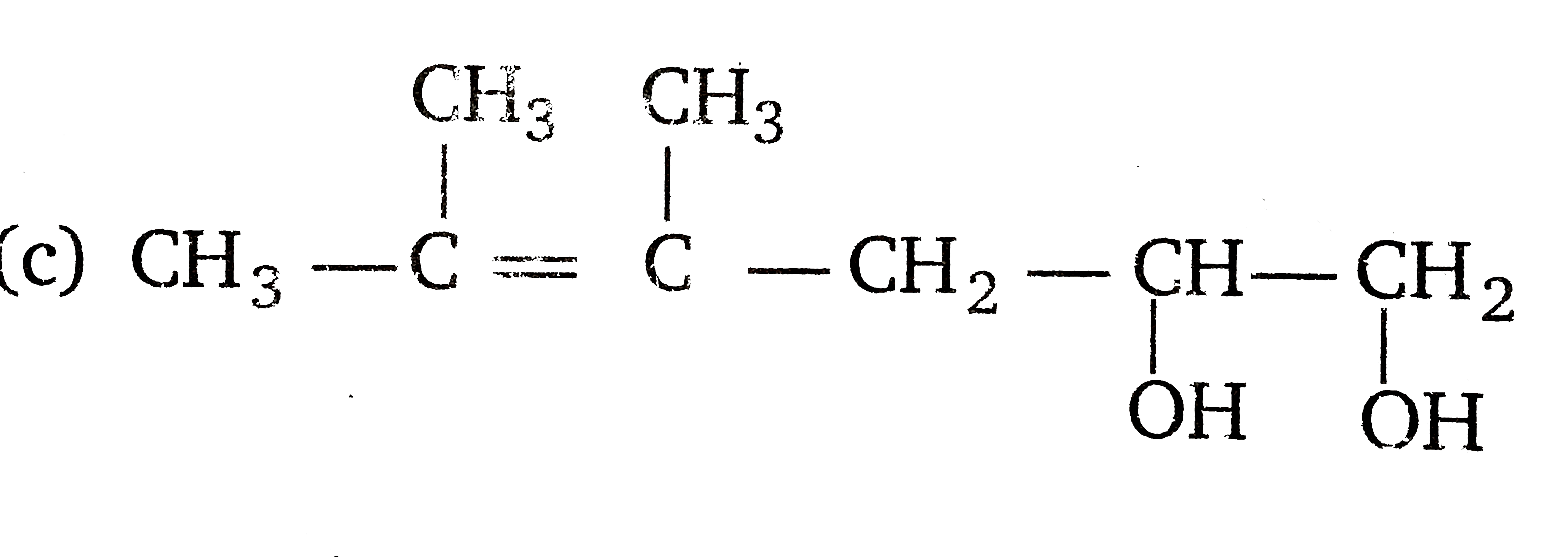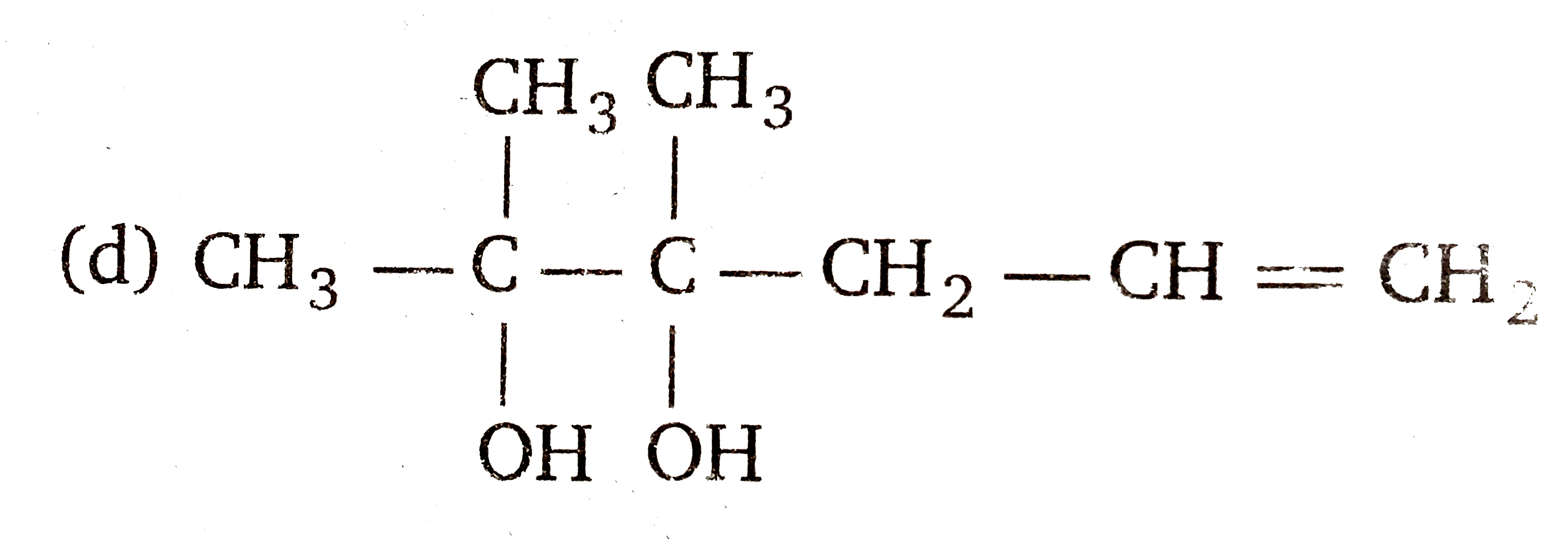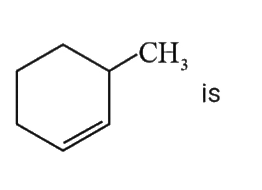Predict the major product of acid catalysed dehydration of :
(i) 1-Methylcyclohexanol (ii) Butan -1-ol
To predict the major product of acid-catalyzed dehydration for the given alcohols, we will follow these steps:
Step 1: Identify the Structures of the Alcohols
1. 1-Methylcyclohexanol: This compound has a cyclohexane ring with a methyl group (CH₃) at the first position and a hydroxyl group (OH) at the same position.
2. Butan-1-ol: This is a straight-chain alcohol with the structure CH₃-CH₂-CH₂-CH₂OH.
Step 2: Acid-Catalyzed Dehydration Mechanism
In acid-catalyzed dehydration, the hydroxyl group (OH) is protonated to form a better leaving group (water), followed by the elimination of water to form a double bond.
Step 3: Dehydration of 1-Methylcyclohexanol
1. Protonation: The hydroxyl group (OH) of 1-methylcyclohexanol gets protonated by the acid, forming a better leaving group.
2. Formation of Carbocation: Upon elimination of water, a carbocation is formed. In this case, the carbocation can be formed at the carbon where the OH was attached.
3. Possible Products:
- If the hydrogen is removed from the adjacent carbon, a double bond forms, resulting in a product.
- There are two possible positions for the double bond, leading to two different products.
Step 4: Determine the Major Product Using Zaitsev's Rule
According to Zaitsev's rule, the more substituted alkene is the major product.
- Product 1: If the double bond is formed between the carbon with the OH group and the adjacent carbon, it will have fewer alkyl groups attached.
- Product 2: If the double bond is formed between the carbon with the OH group and the carbon next to it (which has the methyl group), it will be more substituted.
Thus, the major product will be the one with the double bond between the carbon with the methyl group and the carbon with the OH group, resulting in a more substituted alkene.
Step 5: Dehydration of Butan-1-ol
1. Protonation: The hydroxyl group (OH) of butan-1-ol gets protonated.
2. Formation of Carbocation: The elimination of water leads to the formation of a carbocation.
3. Carbocation Stability: The initial carbocation formed is a primary carbocation, which is less stable.
4. Hydride Shift: A hydride shift occurs to form a more stable secondary carbocation.
5. Formation of Alkene: The secondary carbocation then loses a proton to form the double bond, resulting in the major product.
Step 6: Identify the Major Product
For butan-1-ol, the major product will be the alkene formed from the secondary carbocation, which is 2-butene.
Summary of Major Products
- 1-Methylcyclohexanol: The major product is the more substituted alkene.
- Butan-1-ol: The major product is 2-butene.
1. 1-Methylcyclohexanol: This compound has a cyclohexane ring with a methyl group (CH₃) at the first position and a hydroxyl group (OH) at the same position.
2. Butan-1-ol: This is a straight-chain alcohol with the structure CH₃-CH₂-CH₂-CH₂OH.
In acid-catalyzed dehydration, the hydroxyl group (OH) is protonated to form a better leaving group (water), followed by the elimination of water to form a double bond.
1. Protonation: The hydroxyl group (OH) of 1-methylcyclohexanol gets protonated by the acid, forming a better leaving group.
2. Formation of Carbocation: Upon elimination of water, a carbocation is formed. In this case, the carbocation can be formed at the carbon where the OH was attached.
3. Possible Products:
- If the hydrogen is removed from the adjacent carbon, a double bond forms, resulting in a product.
- There are two possible positions for the double bond, leading to two different products.
According to Zaitsev's rule, the more substituted alkene is the major product.
- Product 1: If the double bond is formed between the carbon with the OH group and the adjacent carbon, it will have fewer alkyl groups attached.
- Product 2: If the double bond is formed between the carbon with the OH group and the carbon next to it (which has the methyl group), it will be more substituted.
1. Protonation: The hydroxyl group (OH) of butan-1-ol gets protonated.
2. Formation of Carbocation: The elimination of water leads to the formation of a carbocation.
3. Carbocation Stability: The initial carbocation formed is a primary carbocation, which is less stable.
4. Hydride Shift: A hydride shift occurs to form a more stable secondary carbocation.
5. Formation of Alkene: The secondary carbocation then loses a proton to form the double bond, resulting in the major product.
For butan-1-ol, the major product will be the alkene formed from the secondary carbocation, which is 2-butene.
- 1-Methylcyclohexanol: The major product is the more substituted alkene.
- Butan-1-ol: The major product is 2-butene.
Topper's Solved these Questions
- BOOK - DINESH PUBLICATIONCHAPTER - ALCOHOLS AND PHENOLSEXERCISE - NCERT Exercise23videos
ALCOHOLS AND PHENOLS
- BOOK - DINESH PUBLICATIONCHAPTER - ALCOHOLS AND PHENOLSEXERCISE - ADDITIONAL IMPORTANT QUESTION30videos
ALCOHOLS AND PHENOLS
- BOOK - DINESH PUBLICATIONCHAPTER - ALCOHOLS AND PHENOLSEXERCISE - COMPLETION QUESTION2videos
ALCOHOLS AND PHENOLS
- BOOK - DINESH PUBLICATIONCHAPTER - ALDEHYDES AND KETONES EXERCISE - Interger5videos
ALDEHYDES AND KETONES
Similar Questions
Knowledge Check
- Question 1 - Select One
The major product of acid catalysed dehydration of 2-methylcyclohexanol and butan-1-ol are respectively
A1-methylcyclohexene and but-1-eneB2-methylcyclohexene and but-2-eneC2-methylcyclohexene and butaneD1-methylcyclohexene and but-2-ene. - Question 2 - Select One
Predict the major product of the reaction.
 A
A B
B C
C D
D
- Question 3 - Select One
 , Predict major product of the reaction :A
, Predict major product of the reaction :A B
B C
C D
D
Predict the major product of acid catalysed dehydration of
(i) 1-methylcyclohexanol and (ii) butan-1-olView Solution(a) What is meant by Hydroboration-oxidation reaction ? Illustrate it with an example.
(b) Predict the major product of acid catalysed dehydration of 1-methylcyclohexanol.View SolutionWhat is meant by Hydroboration - oxidation reaction? Illustrate it with an example.
(b) Predict the major product of acid catalysed dehydration of 1 - methylcyclohexanol.View SolutionThe major product formed by the acid catalysed hydration of
 View Solution
View SolutionPredict the product (major)
 View Solution
View Solution

